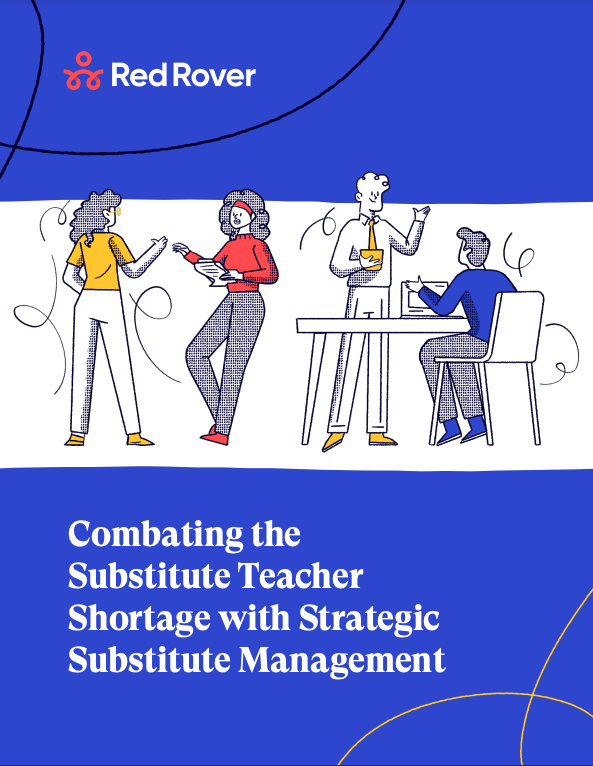Chapter 2
The 3 Key Pillars of Strategic Substitute Management
The substitute teacher shortage is no doubt problematic in education today, but it’s not the only problem; it’s actually a symptom of the greater issue: taking an outdated, nonstrategic approach to substitute management.
Gone are the days of traditional, tactical approaches to improving fill rates, such as simply raising substitutes' pay or changing their educational requirements. Increasing school district fill rates doesn’t just happen by itself—it requires a more thoughtful approach to substitute management supplemented by technology.
More specifically, a strategic approach to substitute management should incorporate each of the following elements: policy, culture, and technology.
1. Policy
Policy issues—or the high-level matters typically determined by the school board and/or the state’s department of education—include substitute qualifications, compensation, resource planning, and more. District policies play an important role in strategic sub management and can significantly impact the quality of substitute teaching.
Kick-start your strategic substitute management policy discussions with these relevant questions:
- How much should we pay our subs?
- What education must substitutes have?
- Should we assign “permanent subs” to particular school buildings or just maintain a pool of qualified subs?
- Should we consider outsourcing substitute placement to a staffing company or do so in-house?
With these questions answered, district leaders can then help develop more granular policies and procedures at the school and district level to attract and retain more qualified substitute teachers.
Examples of different strategic substitute management policy initiatives include:
- Developing district policies to attract and retain subs
- Deciding on sub compensation and requirements
- Creating policies for potential classroom disruptions
- Determining a plan for a lack of thorough lesson plans
2. Culture
Culture is also an important piece of strategic substitute management; fostering a positive, encouraging environment and treating substitutes as valued partners is critical. In contrast with substitute policy that happens at the school board level, culture is usually in the control of central office and school building administrators.
How does culture play a role in strategic substitute management?
The truth is, substitutes want to feel like they’re part of the team and more of a partner to the school and classroom teacher than an understudy. Effective communication between substitutes and schools is critical to building the relationships that keep subs coming back.
To create a culture where substitutes are recognized and included, schools can share praise, offer incentives, provide enhanced learning opportunities, and explore other ways to show appreciation—but that’s not where cultural improvement ends.
It’s also essential to develop a school culture where substitutes not only feel valued and appreciated but also supported and prepared to step in as needed. Substitutes need easy access to assignments, lesson plans, and school-specific information in order to feel prepared for their first day of a substitute teaching gig.

3. Technology
Modern substitute management technology is the indispensable third leg of the structure supporting effective substitute teaching. Great policies and culture won't amount to much if you can't effectively engage and manage substitutes when and where you need them.
Substitute management software supports and connects thoughtful policy and cultural initiatives with the robust tools needed to engage modern subs in today’s evolving gig economy. The right substitute management software can help you:
Find qualified subs quickly and with ease.
Your school needs modern ways to find and engage modern, qualified substitutes. An online substitute management system can help manage vacancy postings, candidate selection, and experience verification with ease and efficiency.
Contact subs in real time about open gigs.
Eighty-four percent of subs want to receive mobile phone app notifications, and 79 percent prefer text messages. The right sub management solution will allow you to reach subs in real time about open gigs via their preferred contact method.
Streamline the entire sub placement process.
Substitute management technology also simplifies workflows throughout the entire sub placement process, providing a more modern experience for teachers and school staff and creating less hassle and confusion for subs. Getting approvals is quick, simple, and painless, which helps avoid unnecessary delays.
Provide the right support for substitutes.
To keep lines of communication open and provide the right support for substitutes, you need the right technology at your disposal. This way, you can share lesson plans and school-specific information to better prepare subs for the classroom.
While modern technology helps drive strategic substitute management, it’s important to keep in mind that not all solutions are created equal. Software quality matters, and certain features—such as text messaging and flexible scheduling—are imperative for improving fill rates and combating the sub shortage.






